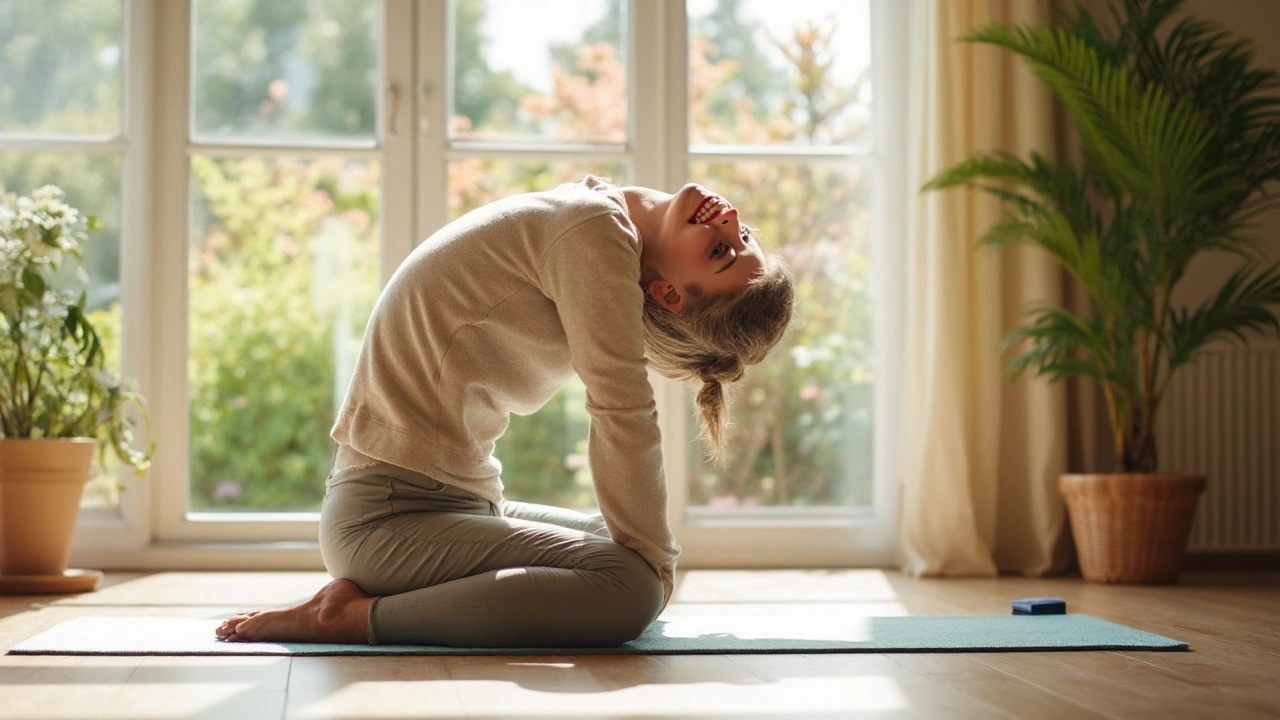Yoga for Arthritis: Gentle Moves to Ease Joint Pain
If joint pain makes everyday tasks feel like a chore, you’re not alone. Millions with arthritis turn to yoga because it’s low‑impact, adaptable, and can be done at home. The best part? You don’t need fancy equipment or years of experience—just a mat and a willingness to move gently.
Why Yoga Helps Arthritis
Yoga mixes stretching, strength building, and breathing. Those three ingredients hit the main problems arthritis throws at you: stiff joints, weak muscles, and stress‑driven inflammation. Stretching keeps the joint capsule flexible, while gentle strength work supports the bones. Deep breathing calms the nervous system, which can lower the body’s inflammatory response. Research shows regular practice can shrink pain scores and improve range of motion, so you end the day feeling more mobile than you started.
Easy Poses to Get Started
1. Cat‑Cow (Marjaryasana‑Bitilasana) – Start on hands and knees. Inhale, drop your belly and lift the head (cow). Exhale, round the spine and tuck the chin (cat). Move slowly for 1‑2 minutes. This flow warms up the spine and hips without pressure on the knees.
2. Seated Forward Fold (Paschimottanasana) – Sit with legs extended, inhale, lengthen the spine, then exhale and hinge at the hips to reach toward your toes. Keep the back flat and stop when you feel a gentle stretch in the hamstrings. Hold for 30 seconds. This pose eases lower back tension that often aggravates hip arthritis.
3. Warrior II (Virabhadrasana II) – Stand with feet wide, turn one foot out, bend the front knee (keep it over the ankle), stretch the arms parallel to the floor, and look over the front hand. Hold for 20‑30 seconds, switch sides. This builds leg strength while keeping the knees supported.
4. Bridge Pose (Setu Bandhasana) – Lie on your back, knees bent, feet hip‑width apart. Press into the feet, lift the hips, and clasp the hands underneath. Hold for 20 seconds, then lower. The bridge strengthens glutes and lower back, both crucial for joint stability.
5. Child’s Pose (Balasana) – Kneel, sit back on the heels, stretch arms forward, and rest the forehead on the mat. Stay for as long as you need. It’s a calming reset that reduces stress‑related flare‑ups.
Start with 10‑15 minutes a day, three times a week. As you feel stronger, add another 5‑10 minutes or repeat the routine on alternate days. Listening to your body is key—if a pose hurts, back off or modify. Use props like cushions or yoga blocks to support knees and hips.
Before you begin, check with a healthcare provider, especially if you have severe stiffness or recent surgeries. Gentle, consistent practice is safer than pushing through pain. Warm up with a few minutes of marching in place or shaking out the hands to get blood flowing.
When you stick with it, you’ll notice everyday tasks—like climbing stairs or opening jars—become easier. The combination of movement and breath not only reduces pain but also lifts mood, making arthritis feel less like a constant battle. Grab that mat, breathe deep, and let yoga bring a little more comfort into your day.

- Jul, 24 2025
- Comments 9